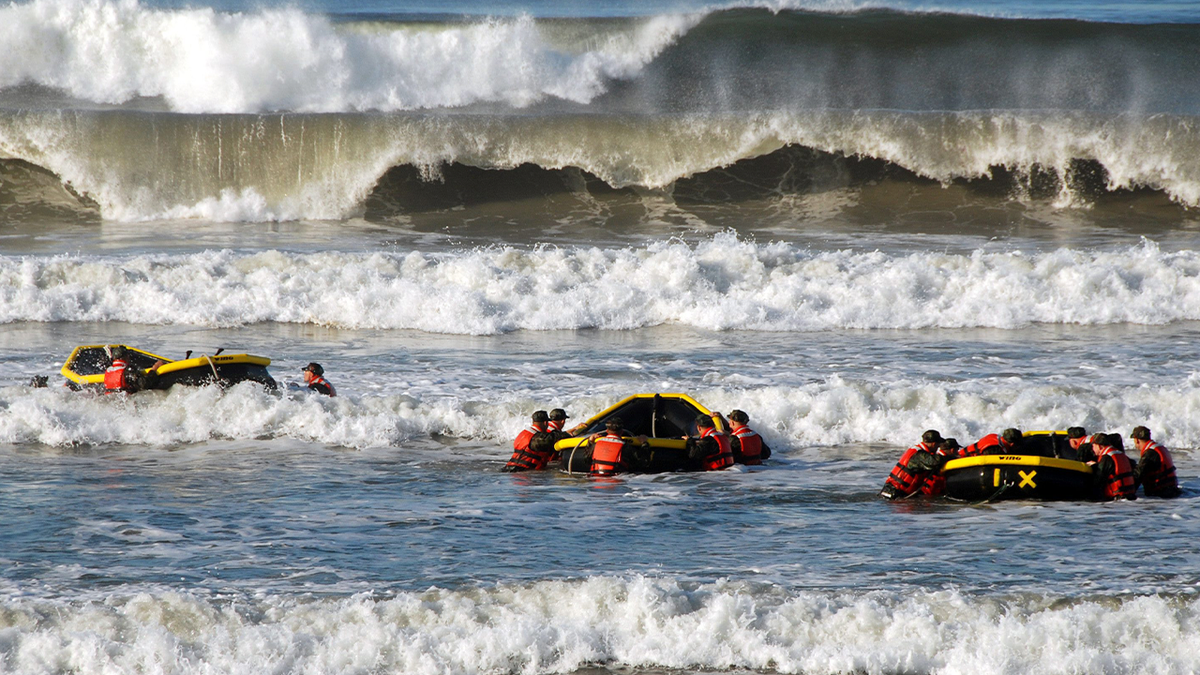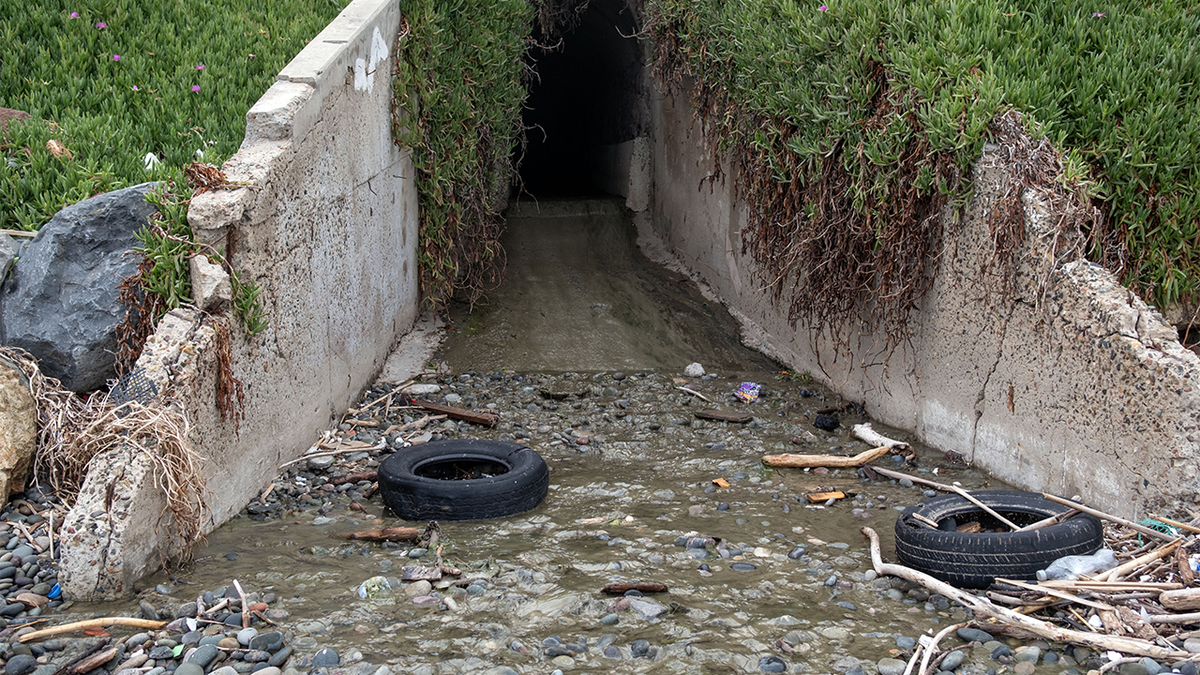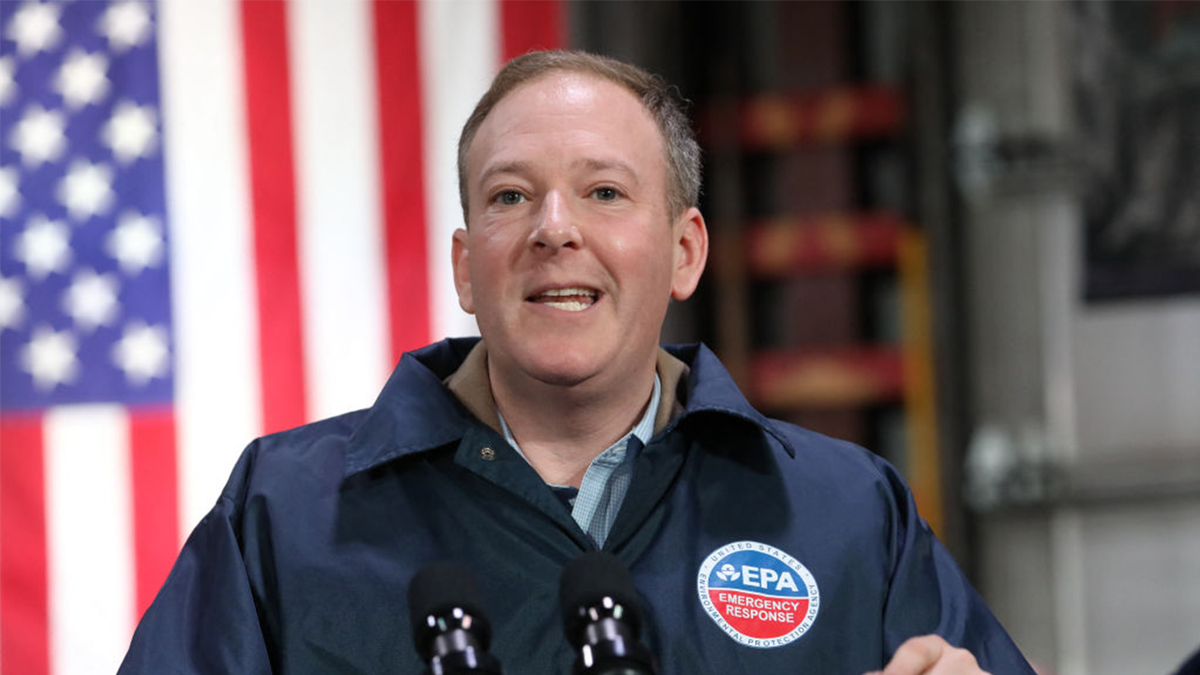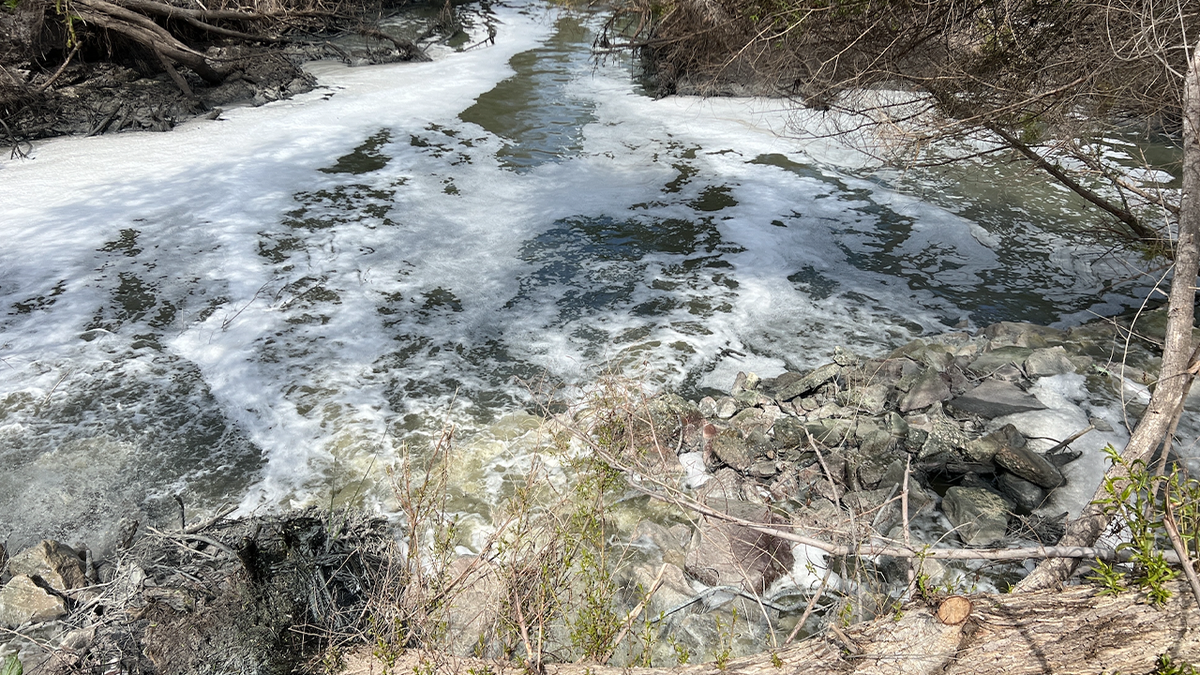Environmental Protection Agency (EPA) Administrator Lee Zeldin visited San Diego Tuesday to address the Mexican sewage flowing into U.S. waters from Tijuana that has contaminated the California coast, including where Navy SEALs train.
“The Americans on our side of the border who have been dealing with this … for decades, are out of patience,” Zeldin said at a Tuesday press conference in San Diego. “There’s no way that we are going to stand before the people of California and ask them to have more patience and just bear with all of us as we go through the next 10 or 20 or 30 years of being stuck in 12 feet of raw sewage and not getting anywhere.”
“So we are all out of patience,” he continued. “There’s a very limited opportunity. We’re in good faith, both on the American side and also on the Mexican side, what’s being communicated by the new Mexican president is an intense desire to fully resolve this situation.”
Zeldin said that he met with Mexican officials for about 90 minutes Monday night to discuss the sewage spewing into U.S. waters — and relayed that the Mexican environmental secretary wants to have a “strong collaborative relationship” with the U.S. to end the pollution.
“I will be speaking with the chief of staff to the Mexican environmental secretary to ensure that over the course of the coming days, over the course of the next couple weeks, that we are able to put together a specific statement from both countries on a mutual understanding of what Mexico is going to do to help resolve this issue,” he said.
EPA CHIEF TAKES ON MEXICAN ‘SEWAGE CRISIS’ FLOWING INTO US WATERS WHERE NAVY SEALS TRAIN
Zeldin said that he is focused on the “specifics” of ending the issue, including drafting a “comprehensive list of everything that we believe with full confidence is going to end the crisis” for projects on both the U.S. side of the border and Mexico.
“We did it yesterday during the meeting, where one particular project as it relates to diverting 10 million gallons per day of water from the Tijuana River Valley, sewage from the Tijuana River valley to the dam, will help relieve stress,” he said. “And they were saying it was going to take until the middle or end of 2027, and we started talking through it. It was a very good collaborative discussion where at the end of the back and forth, the Mexican officials were saying that they believe that we would be able to take off a year of that timeline.”
MEXICO IS POISONING SOUTHERN CALIFORNIA IN A BORDER CRISIS ALMOST NO ONE KNOWS ABOUT
The issue of sewage water flowing into U.S. waters is largely attributed to outdated wastewater infrastructure across the southern border.
Zeldin said his Mexican counterparts cited three infrastructure projects that were completed to help address the crisis — including the recently updated San Antonio de los Buenos Wastewater Treatment Plant — but that a handful of other projects are still in the works, such as installing new “international collector floodgates on the Tijuana River” and rehabilitating pumping plants.

“Now, if you don’t do all of the other projects and all you do is clean up the current contamination, that feel-good moment will last about a day,” he said. “We have to stop the flow in. Mexico needs to fulfill its part in cleaning up the contamination that they caused.”
“We need Mexico to not just commit to all the projects that will stop the flow, but in order to actually finish this project, they’re going to need to commit to that final cleanup,” he said.

MEXICAN SEWAGE GUSHING INTO NAVY SEAL TRAINING WATERS IS US’ ‘NEXT CAMP LEJEUNE,’ VETS WARN
Zeldin was joined by local leaders during the press conference, including California Republican Rep. Darrell Issa and California Democratic Rep. Mike Levin, who recounted to the media that his fight to end the crisis was personal.
“My wife’s nephew trained in Coronado as a Navy SEAL. And in his 20s, he wound up getting cancer,” Levin said. “We don’t definitively know whether that cancer was caused by his service. We know that he’s gotten a lot better. … But like so many Marines and others — our Border Patrol and members of the community — they’re impacted by toxic sewage in the water. We’re impacted in the air.”
Zeldin said he was headed to meet with Navy SEALs after wrapping up the press conference.
White House press secretary Karoline Leavitt commended Zeldin for the trip during the White house press conference on Tuesday, adding that President Donald Trump is committed to having the “cleanest air and the cleanest water.”
“I would also add from the president himself, he has always maintained he wants America to have the cleanest air and the cleanest water. And we want to do what’s right for our environment and for our earth,” she said.
‘CONTAMINATED WATER’
United States Naval Special Warfare Command headquartered in San Diego and is also where Navy SEAL candidates complete their arduous six-month Basic Underwater Demolition/SEAL (BUD/S) training at the Naval Amphibious Base Coronado.
In February, the Department of Defense’s inspector general released a report finding that the Naval Special Warfare Center reported 1,168 cases of acute gastrointestinal illnesses among SEAL candidates between January 2019 and May 2023 alone.
“Navy SEAL candidate exposure to contaminated water occurred because (Naval Special Warfare Command) did not follow San Diego County’s Beach and Bay Water Quality Program’s beach closure postings,” the inspector general report found. “As a result of Navy SEAL candidate exposure to contaminated water during training, candidates are presented with increased health risks and NAVSPECWARCOM’s training mission could be impacted.”

Veterans who spoke to Fox News Digital earlier in April described the contaminated water a national security crisis.
“This is a huge national crisis,” Navy SEAL vet Jeff Gum, who was sickened by the water when he was working through SEAL training in 2008, told Fox Digital in a Zoom interview. “Like half the SEAL teams are located in San Diego, the other half are in Virginia Beach. So when you’ve got half the SEAL teams who are getting exposed to this, then it’s a major issue.”
The CEO of VetComm, which advocates for disabled veterans and those navigating the VA’s complicated health system, compared the crisis to the Camp Lejeune water crisis. Thousands of Marines and others were sickened at North Carolina’s Camp Lejeune base between 1953 and 1987 as a result of water contaminated by industrial solvents used to drink, bathe and cook at the training facilities and on-base housing.

“This is going to be, in my opinion, the next Camp Lejeune water problem that cost our government $21 to $25 billion,” VetComm CEO Kate Monroe told Fox Digital earlier in April. “That’s just in the compensation directly, like the lawsuit portion of it. That doesn’t cover all the compensation you have to pay these veterans tax-free for the rest of their lives. I would say that this issue here in San Diego, if you look at it over the time that people have been training here, you’re looking at another $21 to $25 billion, plus all of the compensation that’s going to come. It would be cheaper for our country to fix this than it would to allow it to continue.”
US SENATOR BLASTS PRESIDENT OF MEXICO, SAYS TOXIC SEWAGE DUMP THREATENS ‘NATIONAL SECURITY’
Zeldin first addressed the sewage problem in March before previewing the trip to take the issue head on.
“I was just briefed that Mexico is dumping large amounts of raw sewage into the Tijuana River, and it’s now seeping into the U.S.,” he posted to X March 8. “This is unacceptable. Mexico MUST honor its commitments to control this pollution and sewage!”
Local leaders have been sounding the alarm on the sewage problem, including Imperial Beach’s Mayor Paloma Aguirre, who sent a letter to Zeldin in March describing how the raw sewage has sparked one of “America’s most horrendous environmental and public health disaster” as billions of gallons have polluted the Pacific Ocean since 2023 alone.

SAN DIEGO SUBURB FACES ‘SEWAGE CRISIS’ FROM LOCAL BEACH
“The toxic sewage coming across the border from Mexico into South San Diego County is among America’s most horrendous environmental and public health disasters,” Aguirre’s March 3 letter to Zeldin and published online reads. “Since 2023, over 31 billion gallons of raw sewage, polluted stormwater and trash have flowed across the Mexican border, down the Tijuana River, through the cities of San Diego and Imperial Beach and into the Pacific Ocean.”

The letter called on Zeldin to assist with the crisis by authorizing a new review of the Lower Tijuana River Valley’s sewage crisis for Superfund designation. The crisis has not only affected Navy SEALs, but also tourism and homeowners, according to the mayor’s letter.
“Our residents, are getting ill due to polluted air,” the letter stated. “Workers, including Navy Seals training in the area, have been sickened on the job by waterborne and aerosolized diseases. Many homeowners have been forced to place air quality monitors on their property so they know whether or not its safe to go outside. And the economic impact is profound, with the sewage crisis hurting area tourism, maritime industry jobs and local property values.”
Read the full article here




